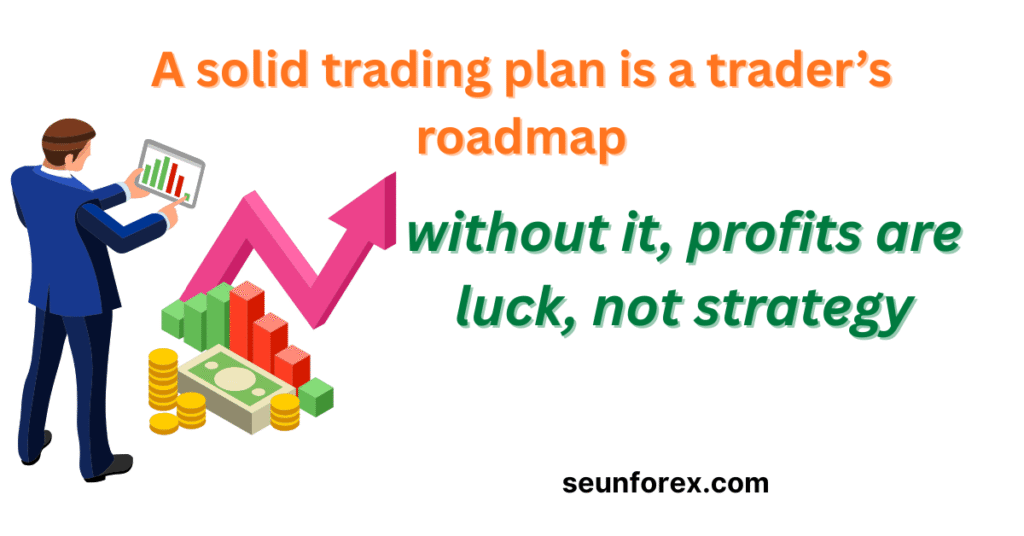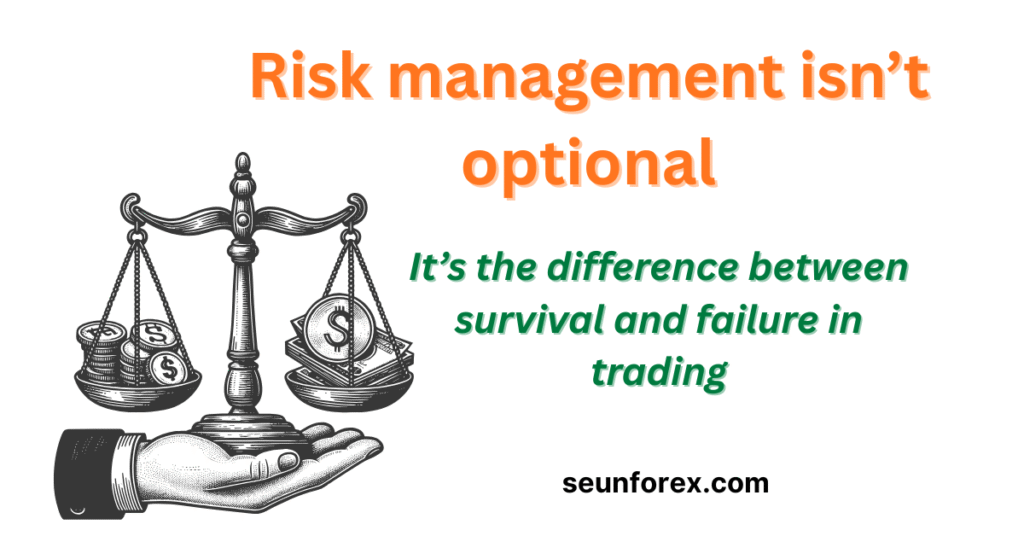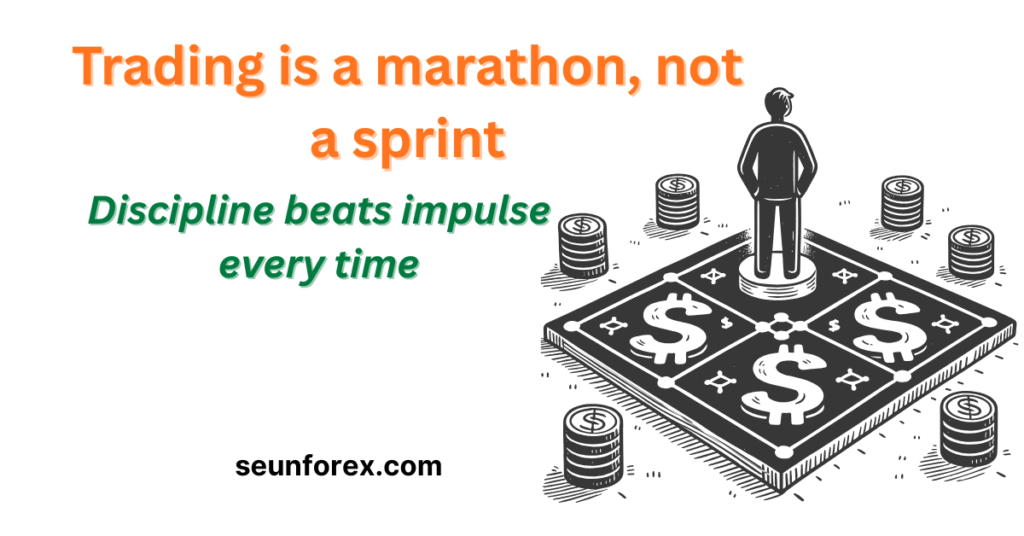
🧠 Trading Discipline Isn’t About Rules — It’s About Mindset
ImImagine entering a trade with all the data on your side: technical signals align perfectly, market news is clear, your trade plan is structured, and your risk management in trading is ready to protect your account. Yet, even in this seemingly perfect scenario, hesitation or impulse can creep in within seconds. Your hands tremble, your heart races, and suddenly your rational plan is at war with your emotions. Every signal that once gave you confidence now feels uncertain, and the fear of loss or the lure of instant profit threatens to override your carefully constructed strategy.
This is the true battlefield of trading discipline. The most lethal opponent is not the market itself—it’s your own psychology. Fear can paralyze decision-making, greed tempts you to overtrade or ignore stop-losses, impatience pushes you into forced trades, and overconfidence blinds you to risk. These emotional pitfalls are invisible yet extremely powerful, capable of destroying even the best trade setups. Trading discipline is not an innate skill; it is cultivated through deliberate, structured practice, reflection, and a deep understanding of your own behavioral triggers.
Professional traders know that success in trading is never about chasing the next hot indicator or relying on a “sure-win signal.” True mastery comes from building robust mental frameworks, maintaining a consistent trade plan strategy, and applying trading psychology tips that allow you to make rational decisions under pressure. They understand that recognizing and overcoming emotional trading mistakes is just as important—if not more—than analyzing candlestick patterns, technical indicators, or market news.
As Warren Buffett famously said:
“The market is a device for transferring money from the impatient to the patient.”
This timeless insight underscores why disciplined, psychology-aware trading consistently outperforms impulsive, emotionally-driven decisions. By prioritizing trading discipline and integrating strong risk management in trading, you can maintain control over your trades, protect your capital, and steadily build consistent profits over time.
🎯 Why Psychology Outperforms Any Indicator
Indicators, scanners, and algorithms are valuable—but they are secondary tools. The real edge comes from behavioral consistency and psychological mastery.
Self-Awareness Kills Bias
Most traders think they follow the rules, but a review of performance often proves otherwise. Without tracking behavior, traders overestimate their discipline, ignore recurring mistakes, and develop blind spots. Self-awareness allows traders to identify patterns of impulsive behavior and correct them before they compound into large losses.
Pattern Recognition
Emotional tendencies manifest in repeated errors. Examples include:
- Revenge trading – attempting to recover a loss with emotional decisions.
- Early exits – giving back potential profits due to fear of drawdown.
- Overleveraging – inflating position size after a win or loss to chase results.
Recognizing these behavioral patterns is critical. The market may remain unpredictable, but your response to it can become predictable—and manageable.
Continuous Improvement
Elite traders refine themselves, not just their strategies. This involves journaling, reviewing trades, and adjusting mental frameworks to reinforce discipline. Brett Steenbarger emphasizes:
“A trader’s journal keeps them constructive, learning, and focused on what truly matters.”
Without psychological discipline, even the most advanced strategies will fail. This is why psychology comes first; execution follows.
🧩 Step 1: Build a Rock-Solid Trade Plan

A professional trade plan is the foundation of disciplined trading. Without it, emotions will dominate decisions.
Core Elements of a Trade Plan
- Entry Criteria – Define precise conditions before execution. Avoid guesswork and ensure every trade meets specific requirements.
- Stop-Loss and Take-Profit Levels – Protect capital first. Profit targets should align with risk-reward ratios, but never compromise your stop-loss discipline.
- Position Sizing – Risk should align with your account size and volatility of the instrument. Overleveraging is a common path to account blowups.
- Documentation – Record each trade, your rationale, and adherence to the plan. Documentation enables reflection and improvement.
Example: Enter EUR/USD at 1.0750 with a 50-pip stop-loss and 150-pip take-profit. Deviating due to fear or greed nullifies the plan. Your edge disappears.
Discipline is not avoiding mistakes—it is structuring your approach to minimize and learn from them.
Why Plans Fail
Even the best trade plan fails if execution lacks discipline. Common reasons include:
- Emotional interference during market volatility.
- Ignoring pre-defined rules due to overconfidence.
- Chasing trades that don’t meet criteria.
A disciplined trader knows the plan is the shield against emotional errors. Deviations are analyzed, not ignored.
📉 Step 2: Risk Management = Longevity

Risk management is freedom—it ensures survival during losing streaks and enables compounding profits over time.
Core Principles of Risk Management
- Maximum 1–2% per trade – Protects account from catastrophic losses.
- Dynamic sizing – Adjust positions for volatility, news events, and account drawdown.
- Avoid overleveraging – Bigger trades increase risk without improving skill or probability.
Example: A trader risking 5% per trade may blow 4 trades consecutively, losing ~20% of capital. A disciplined trader risking 1% survives, adapts, and learns.
“It’s not how much you make; it’s how much you don’t lose.” – Paul Tudor Jones
Advanced Risk Techniques
- Correlation Analysis – Avoid overexposure to correlated instruments that amplify risk.
- Volatility Adjustments – Higher volatility requires smaller positions to maintain consistent risk.
- Capital Preservation Mindset – Your first objective is survival; profit follows naturally.
Risk management is where professional discipline shows. Losing trades happen—but structured risk prevents emotional spirals and account blowups.
🔍 Step 3: Reframe Losses as Learning Opportunities

Losses are inevitable. The difference between professionals and amateurs is how they treat losses.
Treat Data, Not Emotion
Track losses objectively. Analyze patterns, entry and exit timing, and deviations from the trade plan. Emotional responses to losses amplify mistakes.
Avoid Revenge Trading
Impulsive trades to recover losses often create larger drawdowns. Establish rules for maximum consecutive trades per day and stick to them.
Reflection Over Reaction
Example: A trader closes a position prematurely due to fear. Post-trade review shows the setup was valid. Learning: patience and adherence to plan yield more long-term profits than short-term comfort.
“The human mind is a pattern-making machine — which is great for survival, but terrible for trading.” – Ed Seykota
By documenting mistakes, traders convert losses into structured learning, improving discipline over time.
⏱ Step 4: Develop Patience and Avoid Instant Gratification

Instant gratification is the silent killer of discipline. Modern markets provide immediate feedback, triggering dopamine and fear.
Core Practices
- Wait for setups that meet your plan. Never force trades.
- Control impulses by identifying emotional triggers pre-execution.
- Use timers, alerts, and automated signals to reduce screen anxiety.
Example: Traders often enter positions too early because “price looks right.” Waiting for proper setups produces better risk-reward ratios and less emotional stress.
“The market rewards patience more than speed.” – Mark Douglas
Discipline emerges when traders resist impulsive action and allow setups to fully develop.
🏁 Step 5: Review and Self-Audit
Elite traders review every trade meticulously. A trading journal is the ultimate tool to identify and correct behavioral flaws.
Journal Essentials
- Trade Details – Entry, exit, position size, and rationale.
- Emotional State – Stress, overconfidence, or hesitation documented.
- Performance Metrics – Wins, losses, R-multiples, expectancy.
- Behavior Patterns – Recurring mistakes and triggers.
Example: After one month, noticing early exits from winners allows implementation of a trailing stop strategy to capture full trend potential.
“If you can’t measure it, you probably can’t manage it.” – Ed Seykota
Self-audit bridges psychology and actionable trading improvements.
📊 Trader’s Metrics That Matter
Professional traders track metrics beyond P&L:
- Total trades
- Win % (batting average)
- Average win/loss in R
- Risk-reward ratio
- Heat exposure and emotional impact
- Adjusted expectancy after fees and slippage
Negative expectancy signals the need to stop trading and analyze behavior. Sustained positive expectancy requires behavioral consistency, not chasing instant gains.
🔍 Psychological Patterns to Watch
- Revenge Trading – Emotional reaction to losses. Prevent with predefined risk.
- Overtrading – Entering low-quality setups. Prevent with strict criteria.
- Early Exits – Fear of giving back profits. Use dynamic trailing stops.
- Chasing the Market – Late entries. Stick to planned setups.
Recognizing these patterns prevents compounding losses and reinforces discipline.
✅ Key Takeaways
- Trading discipline is rooted in psychology, not indicators.
- Step 1: Build a structured trade plan.
- Step 2: Apply strict risk management.
- Step 3: Reframe losses as learning opportunities.
- Step 4: Practice patience and avoid impulsive trades.
- Step 5: Review, audit, and adapt consistently.
- Track metrics reflecting behavioral consistency, not just P&L.
Track metrics reflecting behavioral consistency, not just P&L. For deeper insights on handling emotional swings and staying disciplined under stress, see our guide on Pain Tolerance in Trading & Emotional Drawdown.
🎤 Closing Thoughts
Markets don’t punish mistakes—they punish repeated mistakes. Discipline transforms trading from a gamble into a repeatable system. Profits follow when process precedes emotion. The true edge is not an indicator or algorithm—it is disciplined application of plans, risk management, and systematic self-review.
Build your framework, analyze your behavior, execute without hesitation, and your psychology will compound alongside your account balance.